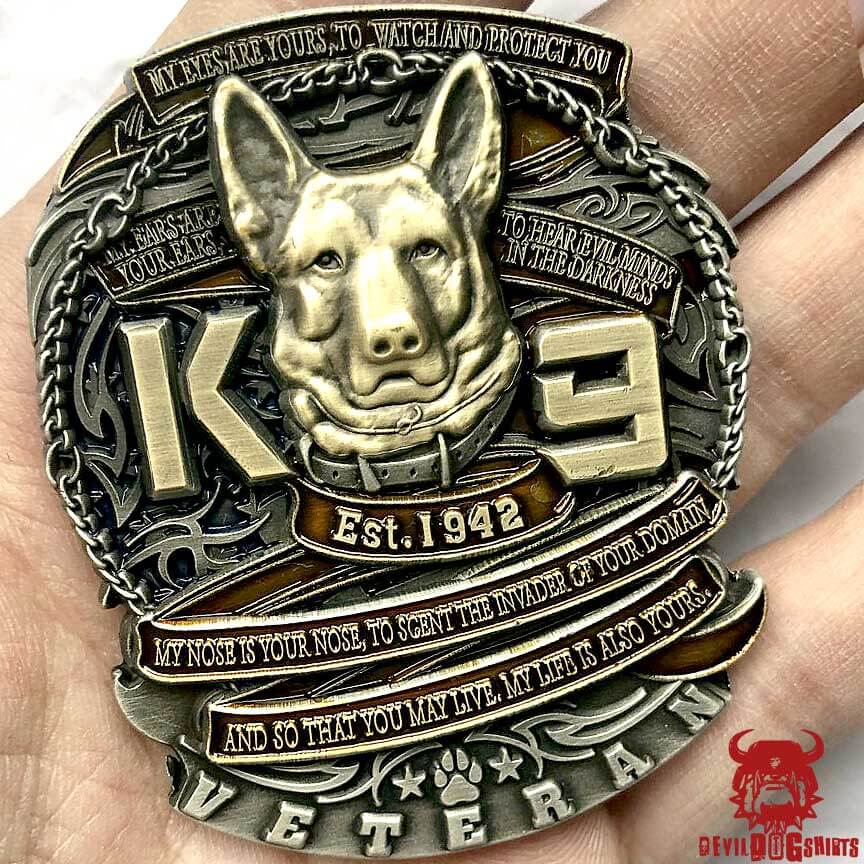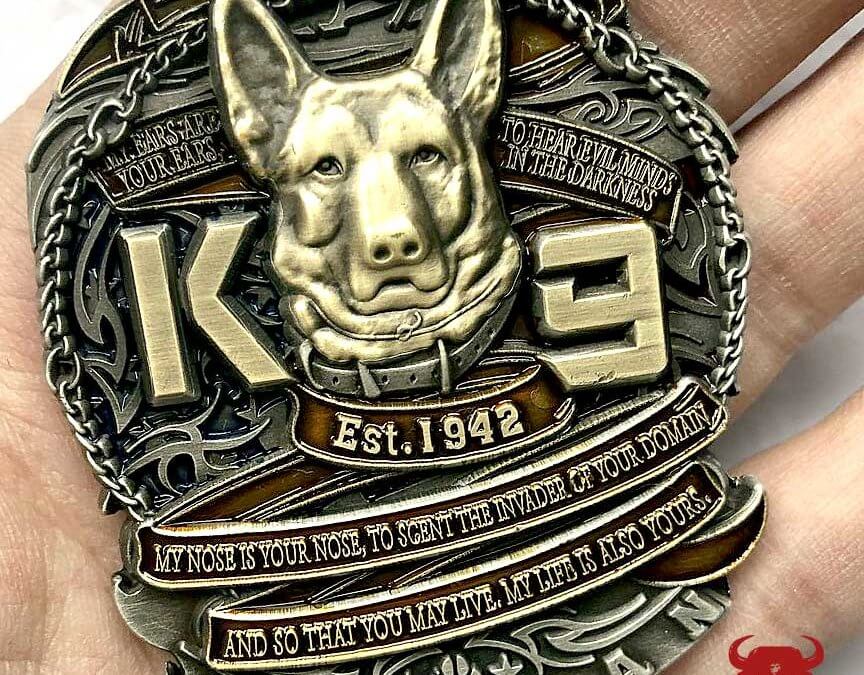USMC K9 Veterans in the United States Marine Corps (USMC) consist of highly trained military working dogs and their handlers. These teams are used to perform a variety of tasks, including explosive and narcotic detection, patrol, and security. Because of the amazing courage and sacrifice of the USMC K-9 Teams we created the K9 Veteran Marine Corps Challenge Coin.
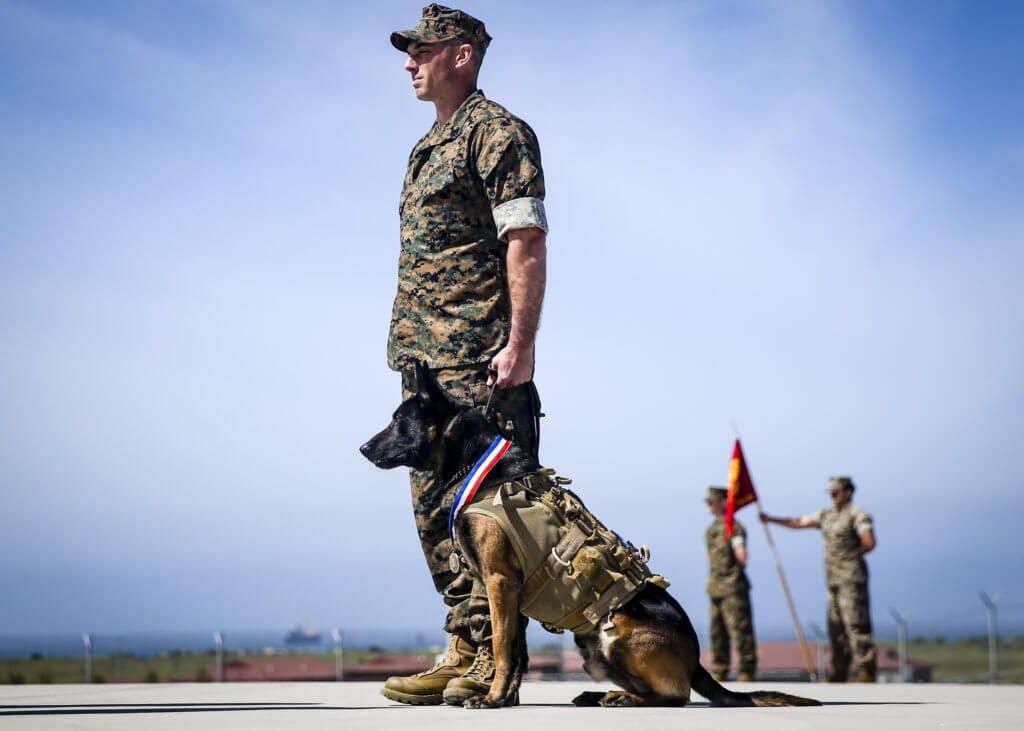
The Military Working Dogs (MWD) are trained to detect a variety of explosives and illegal drugs, as well as to track and locate missing persons. They also provide security during high-risk operations, including patrols and checkpoint operations. These are often the dogs of warfare we hear so much about.
The handlers of the K-9 teams are specially trained to work with their canine partners. They are responsible for the care, training, and deployment of their dogs, and must maintain a close bond with their dogs in order to ensure the effectiveness of the team.
K-9 teams are often deployed to various locations around the world, including combat zones, to support the USMC in various operations. They have been deployed to Iraq and Afghanistan and have been a great asset to the marines on the field.
MWDs and their handlers work closely together and form a bond, many handlers consider their MWDs as part of their family, and it’s a great responsibility to take care of them. When their service is over, many handlers adopt their partners and take them home.
The USMC K9 Veteran teams are an essential part of the Corps, providing critical support to the Marines in the field, and helping to keep them safe and secure.
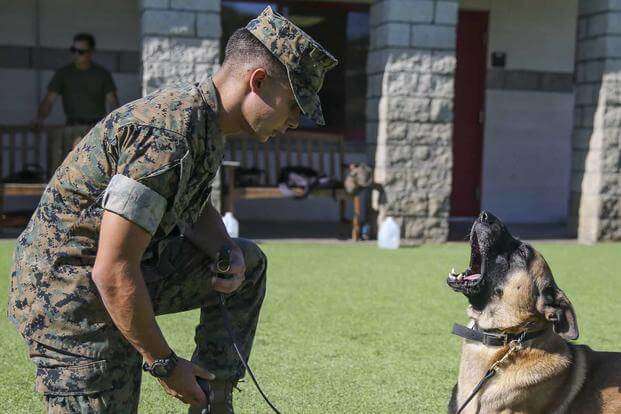
Military Working USMC K9 Veteran Devil Dogs
Military Working Dogs (MWDs) are specially trained dogs that are used by the military to perform a variety of tasks, including explosive and narcotic detection, tracking, and security. These highly trained dogs and their handlers are an important asset to the military, providing critical support to troops in the field and helping to keep them safe and secure.
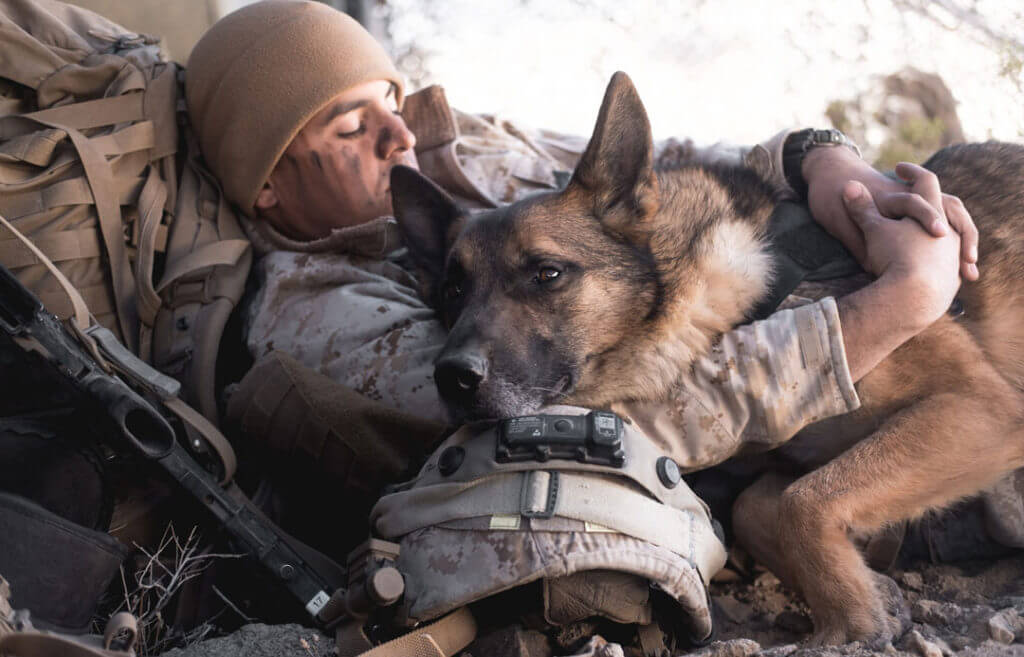
MWDs are typically trained in one of several specialized areas, including:
- Explosive Detection: MWDs are trained to detect a wide variety of explosive materials, including homemade and military-grade explosives. They are used to search for explosives in vehicles, buildings, and open areas, and to detect explosive devices and booby traps.
- Narcotic Detection: MWDs are trained to detect a wide variety of illegal drugs, including marijuana, cocaine, heroin, and methamphetamines. They are used to search vehicles, buildings, and open areas, and to detect drugs hidden on individuals.
- Tracking: MWDs are trained to track human scent, and they are used to locate missing persons, fugitives, and enemy combatants. They are also used to search for survivors in disaster areas.
- Patrol/Attack: MWDs are trained to patrol an area, search for and locate individuals, and attack if necessary in order to protect their handlers or other personnel.
MWDs are highly skilled and well-trained animals, and their handlers are specially trained to work with them. The handlers are responsible for the care, training, and deployment of their dogs, and must maintain a close bond with their dogs in order to ensure the effectiveness of the team.
MWDs are not only a valuable tool for the military but also a great companion for their handlers. MWDs and their handlers form a strong bond, and many handlers consider their MWDs
USMC K9 Veteran dogs have been an integral part of the United States Marine Corps (USMC) for decades, providing invaluable assistance in a wide range of tasks. These highly trained dogs have been used for everything from detecting explosives to searching for lost personnel, and their skills and loyalty have helped to save countless lives over the years.
The use of K9 dogs in the USMC can be traced back to World War II, when the military first began experimenting with using dogs for a variety of tasks. During the war, dogs were used primarily as sentries and messengers, and some were even trained to locate wounded soldiers on the battlefield.
In the years since World War II, the role of K9 dogs in the USMC has continued to expand. Today, these dogs are used for a wide range of tasks, including explosive detection, patrol and reconnaissance, and search and rescue operations. In addition, some K9 dogs are specially trained to work with military police, providing a valuable asset in maintaining law and order on military bases and in combat zones.
One of the most important aspects of the USMC’s K9 program is the extensive training that these dogs receive. From an early age, these animals are put through rigorous training programs designed to hone their instincts, obedience, and specialized skills. Some dogs are trained to detect specific chemicals or compounds, while others are taught to track human scents or locate hidden objects.
Another key factor in the success of the USMC’s K9 program is the close bond that develops between each dog and its handler. Handlers are carefully chosen for their ability to work with these highly trained animals, and they undergo their own intensive training programs to learn how to effectively communicate with and control their K9 partners.
Overall, the history and use of K9 dogs in the USMC is a testament to the important role that these animals have played in protecting American military personnel and assets around the world. From their early days as sentries and messengers to their current role as highly trained detection and security specialists, these dogs continue to serve as valuable assets to the USMC and the nation as a whole.
